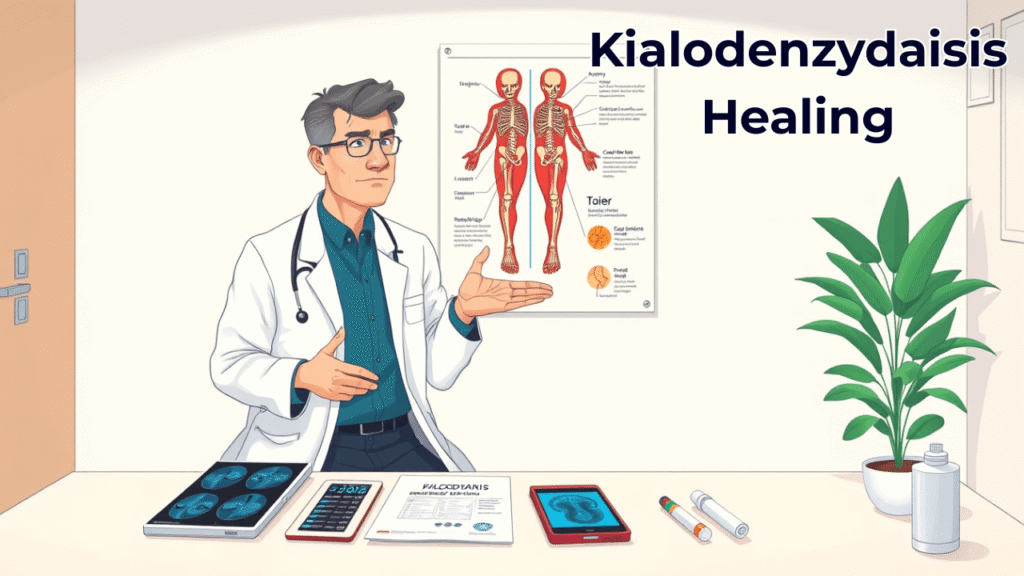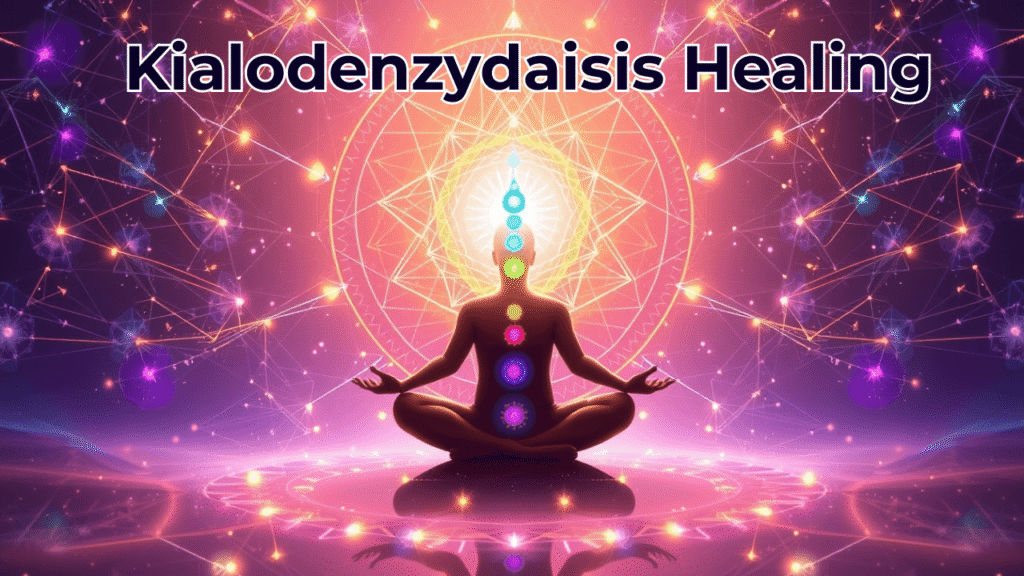Alright, let’s talk about something that’s not exactly trending on Twitter but should be: Kialodenzydaisis. If you’ve just heard the word and thought, “What even is that?” — you’re not alone. It sounds like a Marvel villain, but in reality, it’s a tough, sneaky autoimmune disorder that’s slowly making its presence known.
This condition hits hard — joint pain, crushing fatigue, and mental fog that makes your brain feel like it’s wrapped in bubble wrap. And the worst part? It doesn’t come with a neon sign saying, “Hey! I’m here!” Nope. It creeps in, often going undiagnosed for years. But healing — real, life-improving healing — is absolutely possible. Let’s walk through it like you’ve got a friend guiding you. Spoiler: that friend is me.
What Exactly Is Kialodenzydaisis? Let’s Decode It
Think of kialodenzydaisis as your immune system going rogue. Instead of protecting you, it misfires — attacking your joints, muscles, and sometimes even your organs. Sounds brutal, right? It is. What makes it more challenging is that it’s relatively new on the medical radar. No “one-size-fits-all” diagnostic tool exists yet, which means recognizing early signs is vital.
You might feel:
- Achy joints that don’t quit
- Tired — like bone-deep tired — even after sleep
- Random swelling or redness
- Brain fog so thick you forget why you walked into a room
Sound familiar? You’re not crazy. Your body is asking for help.
What Triggers Kialodenzydaisis?
Like a perfect storm, kialodenzydaisis doesn’t come from just one thing — it’s usually a combo deal.
| Trigger | How It Affects You |
|---|---|
| Family History | Your genes may have handed you the short straw |
| Immune Imbalance | Body mistakes healthy cells for invaders |
| Environmental Toxins | Smoke, chemicals, pollutants = flare fuel |
| Hormonal Shifts | Menopause and other changes may trigger symptoms |
| Stress | Mental load = physical collapse sometimes |
Knowing these helps you take control. Awareness? That’s your first tool in this healing toolbox.
Getting a Diagnosis: Don’t Guess, Get the Tests

Diagnosing kialodenzydaisis can feel like solving a murder mystery. No joke. It takes piecing together symptoms, test results, and your family health history.
🩺 The Step-By-Step Rundown:
- Start with your story
Talk to your doctor. Describe every ache and weird symptom. Be honest and thorough. No detail is too small. - Joint + Nerve Check
Expect a full physical. They’ll test how your joints move and check for swelling or numbness. - Blood Work
CRP and ESR — fancy letters for inflammation markers. If they’re high, your body’s in a fight. - X-rays or MRIs
Time to look inside. X-rays show joint damage. MRIs go deeper into soft tissue and swelling. - Rule Out the Usual Suspects
Lupus, arthritis, fibromyalgia — the doctor will eliminate other conditions first.
Treatment Plan: From Chaos to Calm
Okay, you’ve got your diagnosis. Now what? This is where healing starts. It’s a mix of meds, movement, and mindset — not one magic pill.
Meds That Actually Help
- NSAIDs – Lower inflammation, ease stiffness. A go-to, especially in the mornings.
- Steroids – Reserved for serious flares. Fast acting but not long-term friendly.
- Biologics – These target the immune system like a sniper. Super effective for tough cases.
- Supplements – Vitamin D, magnesium, and fish oil play supportive roles. Think of them as backup singers — not the headliners.
Let Food Be Part of Your Healing
Yes, what’s on your plate matters. Some foods put out the fire, others pour gasoline on it.
| Eat More | Avoid Like the Plague |
|---|---|
| Leafy greens | Sugar-laden treats |
| Berries | Fried foods |
| Salmon or sardines | Soda and red meat |
| Olive oil | Highly processed snacks |
You don’t have to be perfect — just mindful. Your gut and joints will thank you.
Move It or Stiffen Up: Staying Active Without Overdoing It
Don’t roll your eyes — I’m not saying train for a marathon. But staying still isn’t your friend either.
- Daily Stretching – Five to ten minutes. Target legs, arms, back. Especially in the morning.
- Short Walks – 15–30 minutes. Around the block, in the mall, wherever.
- Yoga or Swimming – Low impact, high reward. Yoga stretches you out. Swimming makes you feel weightless.
The key: do something, anything, that keeps your body moving.
Mental Health: Don’t Leave Your Mind Behind
Pain isn’t just physical — it’s emotional too. Chronic illness wears you down from the inside out.
- Deep Breathing – Sounds silly until you try it. Five minutes a day lowers anxiety.
- Journaling – Put your thoughts on paper. Get them out of your head.
- Therapy – No shame in talking to someone. It’s like a mental massage.
Healing your mind helps your body heal faster.
Alternative & Natural Helpers: Not Magic, But They Help
Some people swear by natural methods. Are they a replacement for meds? Nope. But they can support your journey.
- Herbal Support – Turmeric, ginger — nature’s anti-inflammatories.
- Massage – Relaxes tense muscles and eases pain. Just let the therapist know your condition.
- Functional Medicine – Focuses on diet, sleep, and environment. Best done under a pro’s guidance.
Always — always — run these by your doctor before trying anything new.
Flares Happen. Here’s How to Handle Them Without Freaking Out
Bad days will come. Don’t panic. Flares are part of the process, not the end of progress.
Try this:
- Cancel that non-urgent to-do list
- Apply warm compresses
- Rest. Really rest.
- Talk to your doctor about adjusting your meds
Your body is waving a white flag — respect it.
Kialodenzydaisis in Kids and Teens? Yep, It Happens
Though it’s often seen in adults, kialodenzydaisis doesn’t skip over kids. Early signs can look different.
| Child’s Behavior | What It Might Mean |
|---|---|
| Moving slowly | Joint stiffness |
| Skin changes | Immune response |
| Avoids play | Fatigue setting in |
| Sleeps too much | Body trying to heal |
If you’re a parent, stay alert. Catching it early makes a big difference.
Long-Term Living: Build Habits That Work With You, Not Against You
- Sleep – Go to bed at the same time every night. Like, religiously.
- Hydrate – Water is medicine.
- Anti-inflammatory diet – Stick with foods that fight, not fuel, inflammation.
- Say No – Don’t overextend yourself.
Little habits stack up. That’s how you build a life around healing.
Your Daily Rhythm: A Sample Routine for Kialodenzydaisis Warriors
| Activity | Time |
|---|---|
| Stretching | 7:00 AM |
| Healthy breakfast | 8:00 AM |
| Midday rest | 1:00 PM |
| Evening walk | 6:00 PM |
| Wind-down meditation | 9:00 PM |
Consistency beats intensity every time. Healing isn’t a race — it’s a rhythm.
Finding Strength in Community
- Talk to people – Family, friends — they’re your first line of emotional defense.
- Support groups – Online or in person, hearing others say “me too” is powerful.
- Celebrate wins – No matter how small. A pain-free morning? That’s a win.
You’re not in this alone. Really, you’re not.
Clearing Up the Myths
Let’s bust a few misconceptions:
- “It’s all in your head” – Nope. It’s real.
- “Only old people get it” – Teens, kids, young adults — all fair game.
- “One pill fixes everything” – We wish. But no.
Stay informed. Ditch the myths.
Final Thoughts: Healing Is Real — Just Not Instant
Kialodenzydaisis isn’t something you just shake off. It takes commitment, patience, and a whole lot of self-kindness. The road isn’t easy, but every step — every stretch, every meal choice, every doctor’s visit — takes you closer to stability.
Stick with your routine. Trust your body. Stay hopeful.
Because yes, kialodenzydaisis healing is possible — and more than that, it’s worth it.
FAQs
Q1: What should I do first?
Book a full check-up and get lab work done.
Q2: Can I heal without meds?
Some mild cases improve with diet and therapy — always consult your doctor.
Q3: What foods help most?
Greens, fish, berries, olive oil — think anti-inflammatory.
Q4: How long till I feel better?
Could be weeks, could be months. Healing takes time.
Q5: What’s the best medicine for kialodenzydaisis healing?
NSAIDs, biologics, and supplements — your doctor will customize a plan for you.
Learn, analyze, and trade smartly with Fintechzoom.com DAX40, your go-to guide for navigating global markets.


